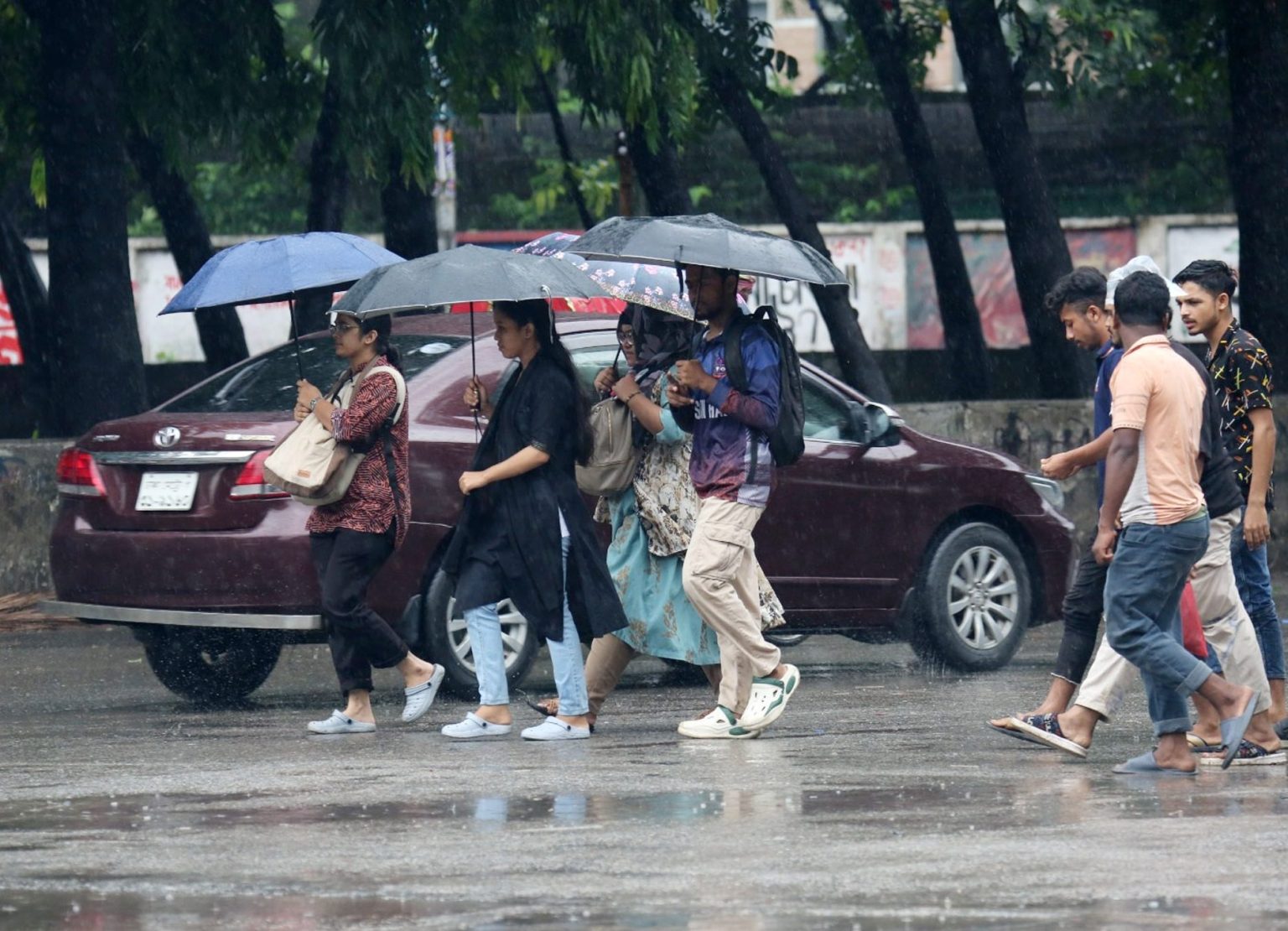Flooding in far north and CHT areas wreak havoc as the monsoon season intensifies, with large parts of the country grappling with swollen rivers and rising water levels.
The reports from the Bangladesh Meteorological Department indicate heavy to very heavy rainfall across eight divisions, particularly in the southern regions, including
Khulna, Barishal, and Chattogram. Over the past 24 hours, the highest rainfall of 101 millimeters was recorded in Koyra, Khulna, causing rivers to overflow and flood
low-lying areas.
In Rangamati, the situation worsened as hill floods triggered a significant rise in the water level of Kaptai Lake, submerging the district’s iconic hanging bridge.
Authorities have closed the bridge to traffic as about 4 inches of water now cover the bridge deck, causing an estimated financial loss of Tk 8,000 to Tk 10,000 per
day.
Alok Bikash Chakma, the manager of the Rangamati Government Tourist Complex, said that the bridge would reopen once water levels recede. Locals and tourists have
called for an elevation of the bridge to prevent frequent submersion during the rainy season.
Meanwhile, in Lalmonirhat, the Tista River crossed the danger level by 7 centimeters on Tuesday night, flooding parts of four upazilas, including Hatibandha and
Aditmari, and trapping over 500 families. Damaged infrastructure, including a mud road and an embankment in Hatibandha’s Dhubni area, worsened the devastation.
The water level began to recede by Wednesday afternoon, but the damage remains extensive.
Local residents have expressed frustration at the recurring nature of these floods, particularly when the Gajoldoba barrage is opened every year.
“The flooding and water scarcity during other seasons damage crops and harm the region’s livelihood. We urgently need the Tista Master Plan to address these
challenges permanently,” said Rabiul Alam, a local college teacher.
Lalmonirhat District Commissioner(DC) HM Rokib Haider confirmed that relief materials had been sent to the affected areas. However, as the country faces the
ongoing flood crisis, swift and comprehensive action is needed to mitigate both the environmental toll and the impact on local communities.


